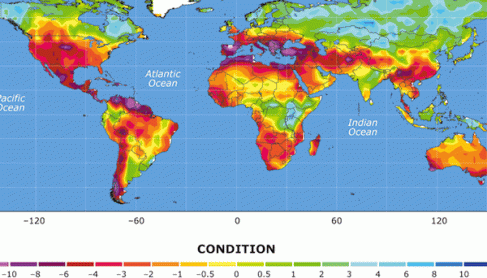We all are aware of the breaking environmental news regarding current drought conditions in the United States. Presently, more than half of the United States is suffering from the worst drought conditions since the Dust Bowls, the last of which occurred 50 years ago. We are witnessing wilted crops, particularly corn, dried-out, cracked soil and devastating forest fires caused by parched woodlands. It is important to note that the current drought levels have not reached those of the Dust Bowl where 63% of the country experienced severe drought; however, today’s statistics do place this occurrence in the top 10% for the past century.
Comparisons of statistics for severe droughts in the 1930’s and 1950s have resulted in some assumptions, especially by some politicians and talking heads that the current drought is not caused by global warming. One such argument notes that carbon emissions were lower in the 30s than they are today, so the problem must have been due to some other natural occurrence. Tree-ring data often have been cited to suggest that North American droughts are part of a natural cycle tied to La Nina events. Environmental scientists now are compiling compelling evidence that rising temperatures are making droughts more common, and this phenomenon is less likely attributable to natural causes.
The primary focus now must be on measures to address the problems of climate change. John Antler of Montana State University has published a paper, which proposes that the government shift policies to adapt to climate change, i.e., providing subsidies for crops such as corn and soy to prevent adaptation by locking in current farming patterns. (http://www.rff.org/news/features/pages/climate-change-forcing-farmers-to-adapt.aspx) Tom Philpott recommends a stronger push towards organic farming. Recent research concludes that while organic farming yields smaller crop production, the organic farming process holds retains more water and performs better during droughts (http://www.motherjones.com/tom-philpott/2012/07/what-organic-ag-teaches-us-about-feeding-ourselves-while-planet-heats).
Currently, the United States has not been impacted as severely as many other nations by drought and destruction of food supply. However, we see the effects of droughts in terms of increasing prices for food and increasing disasters, such as forest fires and parched land. Droughts are becoming difficult to avoid, and steps must be taken immediately to protect our land, population and food sources. Our very existence depends on this. To save our world, let’s live green, be green.
The Palmer Drought Severity Index mid-century. A reading of -4 or below is considered extreme drought. (Source: National Center for Atmospheric Research).

